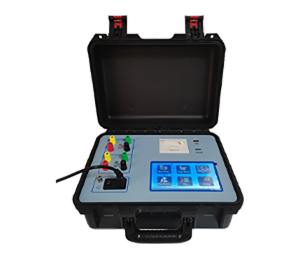 English
English


bushing tan delta
Understanding Bushing Tan Delta Importance and Applications
Bushing tan delta, also known as the power factor of transformer bushings, is a crucial parameter in the electrical engineering field, particularly in the operation and maintenance of high-voltage electrical equipment. Transformer bushings are critical components that isolate conductive parts from ground while allowing electrical energy to be transferred. The tan delta measurement serves as an indicator of the insulation condition of these bushings, making it an essential part of asset management for power utilities and industries reliant on electrical infrastructure.
What is Tan Delta?
Tan delta, or the dissipation factor, is defined as the ratio of the resistive current to the capacitive current in an insulating material. It’s a dimensionless quantity that provides insight into the dielectric losses within an insulating medium. In practical terms, a lower tan delta value indicates better insulation quality and less energy loss, while a higher value suggests deterioration or potential failure.
The concept of tan delta arises from the fact that insulation materials, such as those used in transformer bushings, are not perfect. They exhibit some degree of electrical losses, which can increase due to factors such as temperature, humidity, and aging. By measuring the tan delta, engineers can assess the performance and longevity of the insulating materials.
Why is Bushing Tan Delta Important?
1. Predictive Maintenance Regular monitoring of bushing tan delta allows for predictive maintenance practices. By tracking changes over time, maintenance teams can identify trends that may indicate impending failure or degradation. This proactive approach minimizes unexpected outages and extends equipment lifespan.
2. Safety and Reliability High-voltage equipment, including transformers, operates in challenging environments. Monitoring bushing tan delta ensures that the equipment functions safely and reliably. Failure of transformer bushings can lead to catastrophic failures, equipment damage, and safety hazards. Understanding tan delta values allows for timely interventions.
3. Cost Efficiency While testing bushing tan delta incurs costs, the long-term savings generated through efficient maintenance and reduced downtime can be substantial. Identifying issues early on avoids costly repairs and replacement, saving on both immediate and long-term operational costs.
bushing tan delta

4. Asset Management For electricity providers and industrial plants, efficient asset management is key to operational success. Measuring bushing tan delta contributes valuable data to asset management systems. This data enhances decision-making processes regarding maintenance schedules, upgrades, and budgeting for future capital expenditures.
How is Bushing Tan Delta Measured?
Bushing tan delta is typically measured using a specialized test set-up that applies a high-voltage signal to the bushing. The resulting current flow is analyzed to calculate the tan delta value. This procedure can be performed on-site or in a controlled laboratory environment. Additionally, modern measurement techniques often include advanced software that aids in interpreting data trends over time, further enhancing the analysis accuracy.
Trends and Future Direction
The increasing complexity of electrical systems and the push for smarter grids necessitate robust monitoring techniques, including bushing tan delta measurements. With the integration of Internet of Things (IoT) technologies, real-time monitoring and data analytics will likely become the norm. These advancements promise to enhance the efficiency of bushing maintenance and provide deeper insights into the overall health of electrical infrastructure.
Furthermore, as the energy sector moves toward renewable sources, ensuring the reliability of existing infrastructure becomes increasingly vital. Bushing tan delta testing will play a key role in managing the transition to greener energy sources, ensuring that aging equipment can cope with new operational demands.
Conclusion
Bushing tan delta serves as a critical measure of the health of transformer bushings. With its direct implications for safety, reliability, and cost efficiency, it represents an integral part of modern electrical engineering practices. As technologies in monitoring and data analytics evolve, the importance of tan delta measurements will only continue to grow, paving the way for improved asset management and safer electrical systems. Understanding and employing this measurement effectively can lead to a more reliable and efficient power distribution network, ultimately benefiting both utilities and consumers alike.
-
Differences between open cup flash point tester and closed cup flash point testerNewsOct.31,2024
-
The Reliable Load Tap ChangerNewsOct.23,2024
-
The Essential Guide to Hipot TestersNewsOct.23,2024
-
The Digital Insulation TesterNewsOct.23,2024
-
The Best Earth Loop Impedance Tester for SaleNewsOct.23,2024
-
Tan Delta Tester--The Essential Tool for Electrical Insulation TestingNewsOct.23,2024





